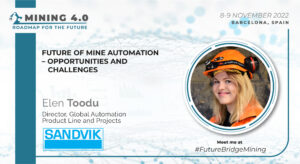Mining has one of the largest median gender pay discrepancies of any business. Adapting to the mining sector can be twice as difficult for women as it is for males. Mining firms face a generational challenge: maintaining competitiveness and meeting and exceeding safety and sustainability standards. To achieve these objectives, the sector will require the most diverse and robust talent pool imaginable.
Women are under-represented in mining companies at all levels. Nonetheless, there are still chances for the business to improve female recruitment, retention, and advancement.
Women are drawn to the mining industry for a variety of reasons, including the type and breadth of labor available, possibilities for professional growth and progress, and competitive pay. These three criteria are constant across regions, with developing regions ranking salary as the most important element for industrial recruitment. As a result, it is remarkable that mining has one of the largest median gender pay discrepancies of any business. While not at the top of the list, women appear to be drawn to the mining industry.
Company culture and a lack of diversity above the entry-level appear to be other factors driving women away from the mining industry. Adapting to the culture of the mining sector can be twice as difficult for women as it is for males. A variety of elements, including leadership role modeling, biases, business policies, and contractors, all have an impact on the sector’s culture. Respondents who judged their corporate culture to be unwelcoming to diversity were twice as likely to desire to quit as those who perceived their firm to be balanced. Mining firms face a generational challenge: maintaining competitiveness in a world of diminishing productivity and quickly evolving and distinguishing technology, while also meeting and exceeding safety and sustainability standards.
To achieve these objectives, the sector will require the most diverse and robust talent pool imaginable. Creating a practical diversity road plan should be a hands-on and structured partnership between talent and HR units, operational functions, and company executives. Once annual strategic planning is completed, it cannot be an afterthought. Diversity of talent is a moral obligation as well as an economic opportunity; it also provides a competitive advantage.





